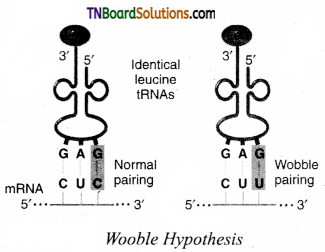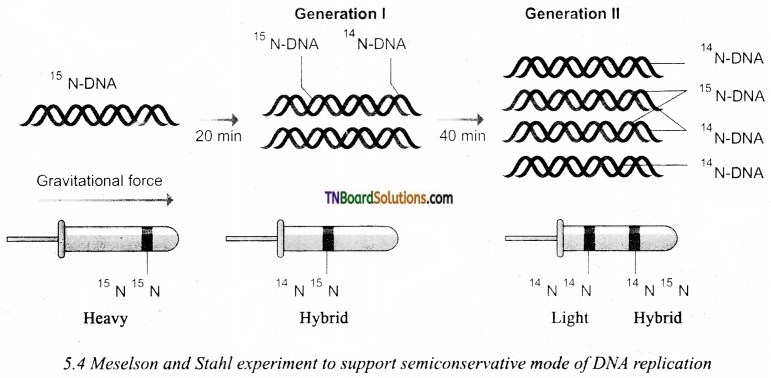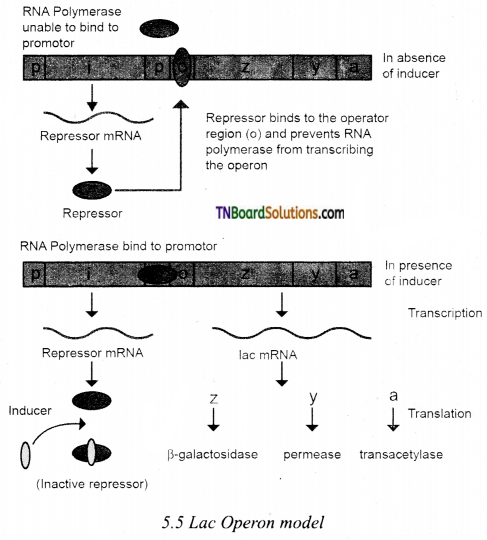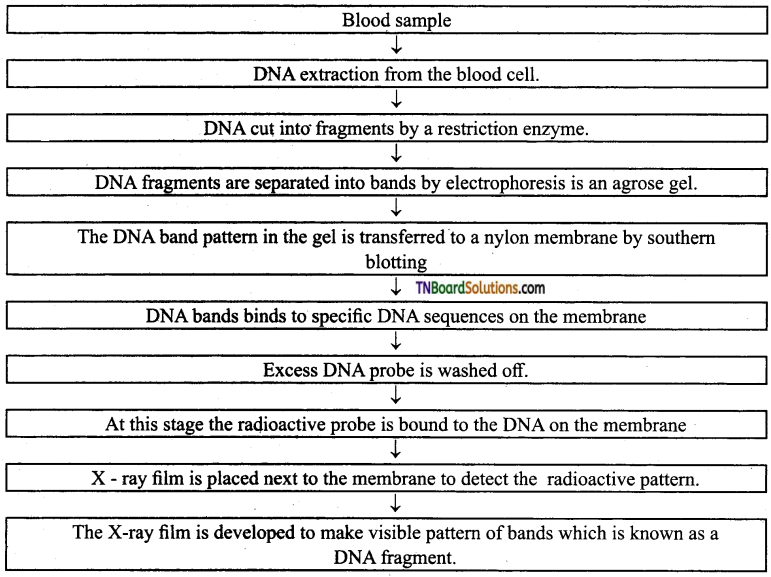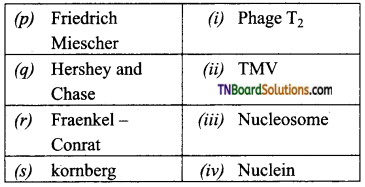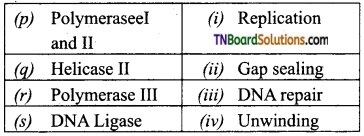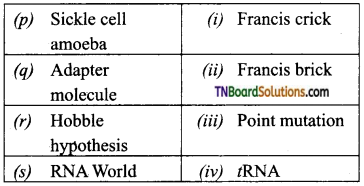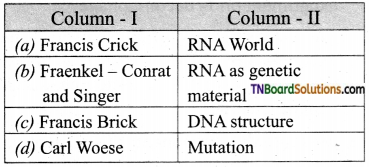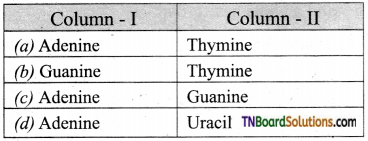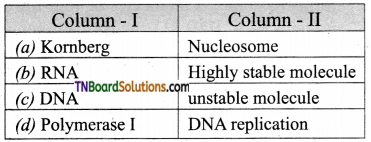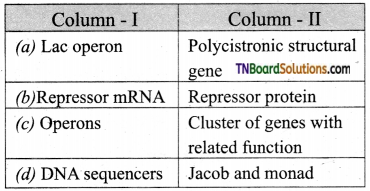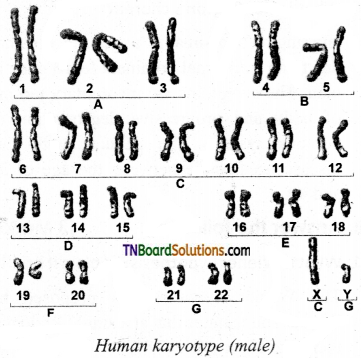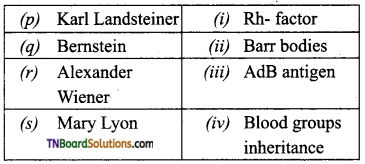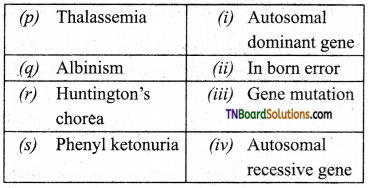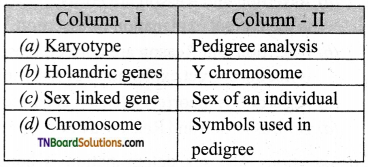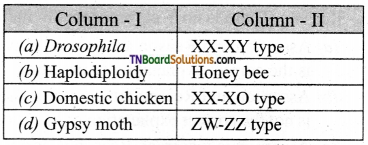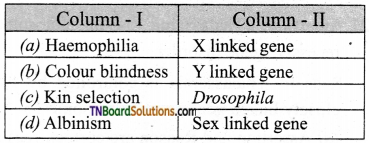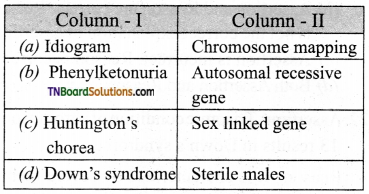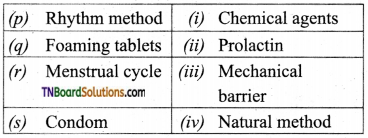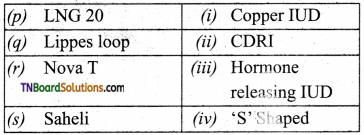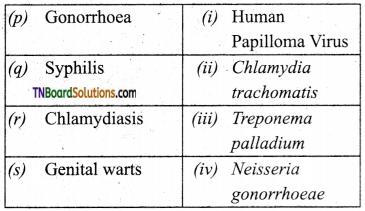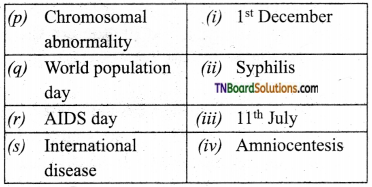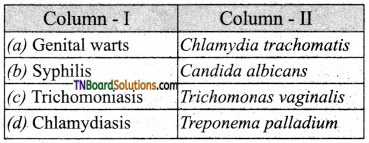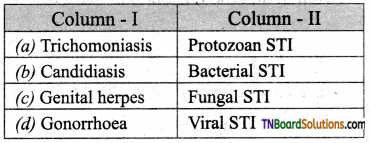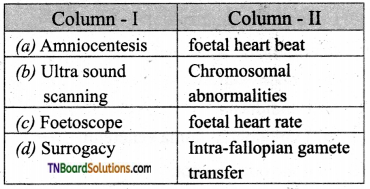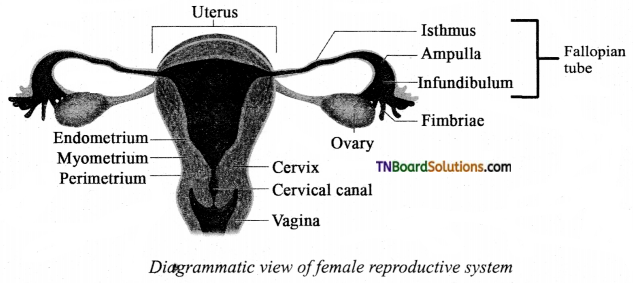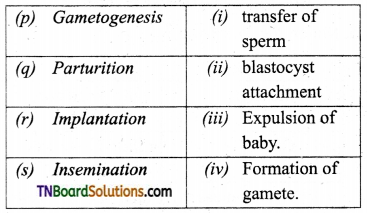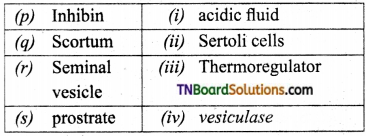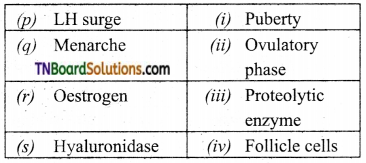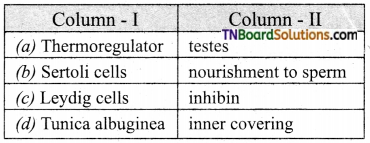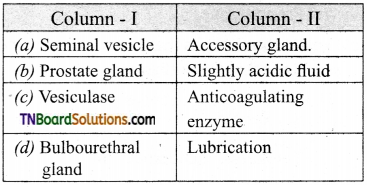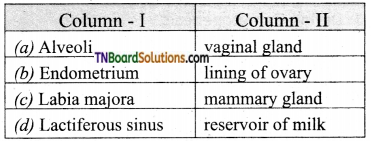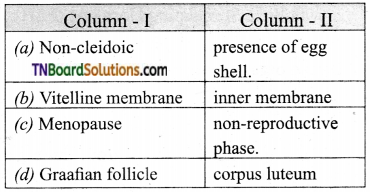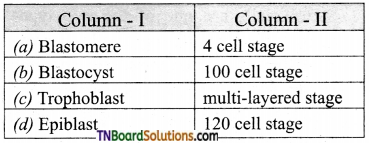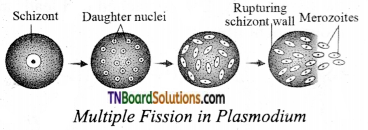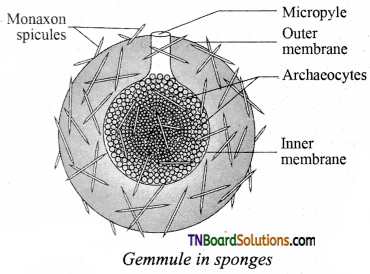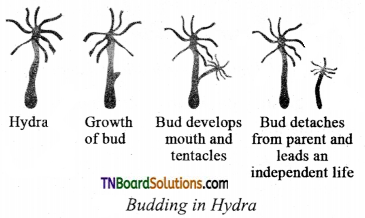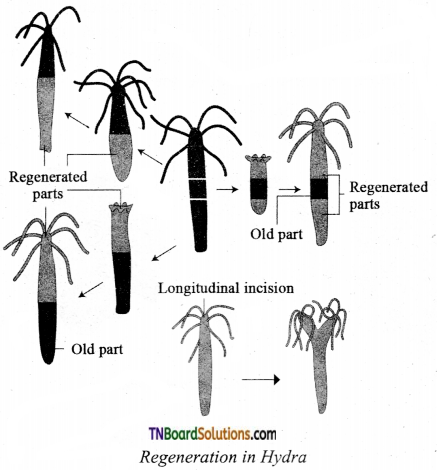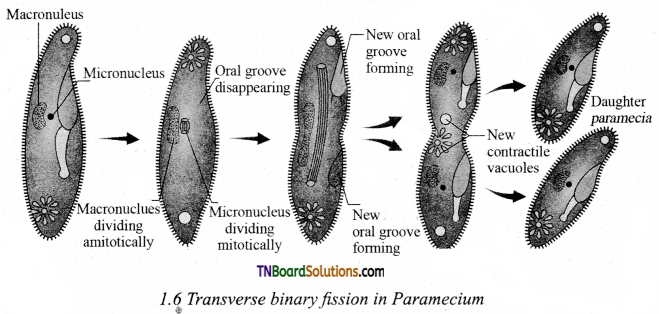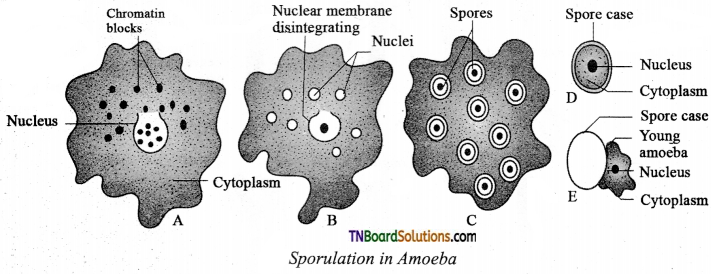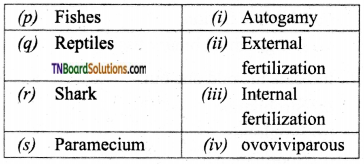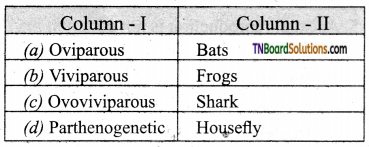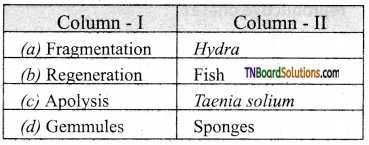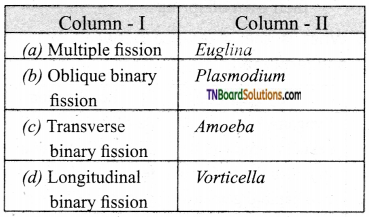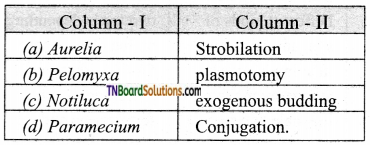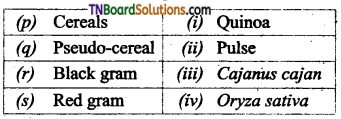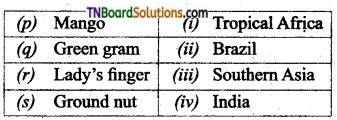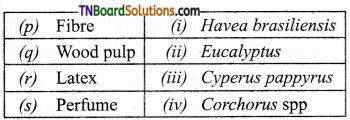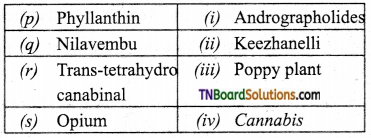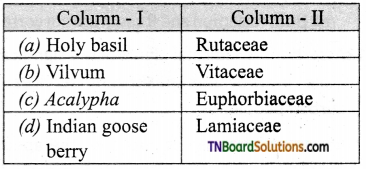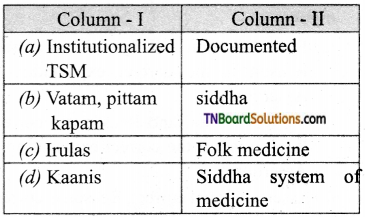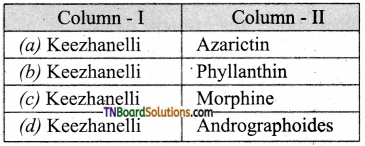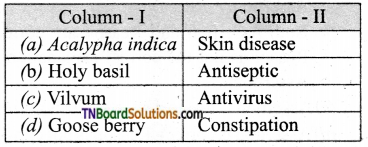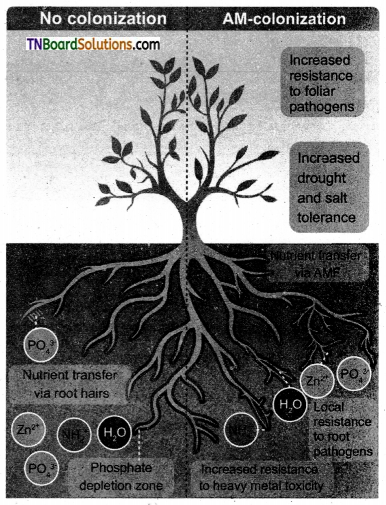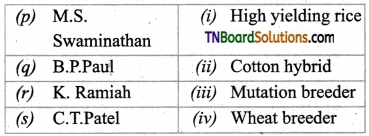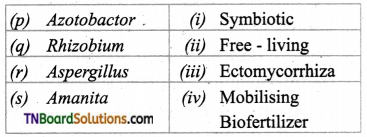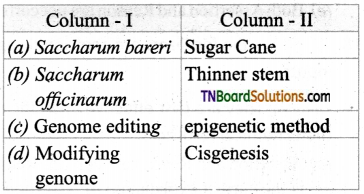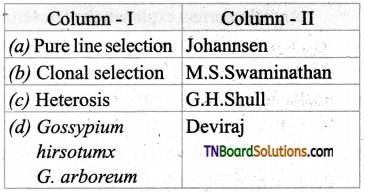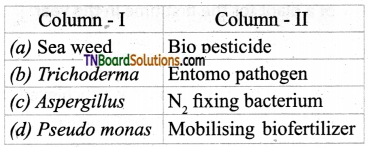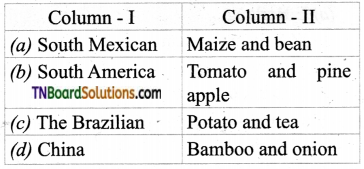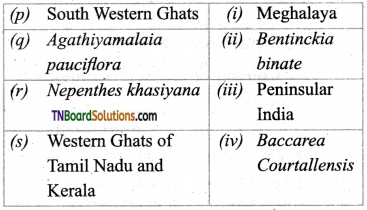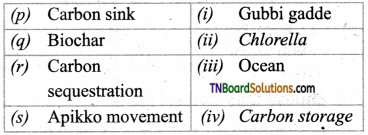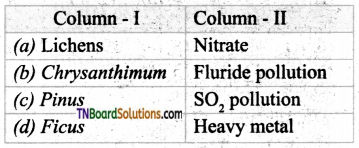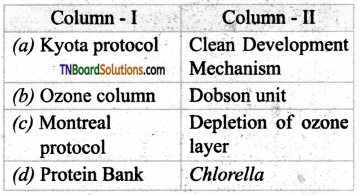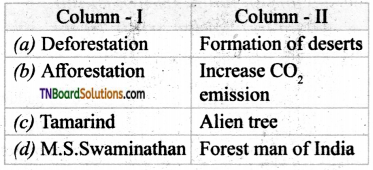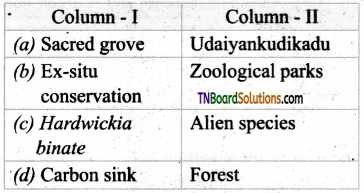Students get through the TN Board 12th Bio Zoology Important Questions Chapter 6 Evolution which is useful for their exam preparation.
TN State Board 12th Bio Zoology Important Questions Chapter 6 Evolution
Very short answer questions
Question 1.
Explain briefly the theory of special creation.
Answer:
The theory of special creation is the process of origin of life in which all the components of the universe namely plants and animals are created by a supernatural power, referred to as God.
Question 2.
Define biogenesis.
Answer:
Biogenesis is defined as a process, through which life arose from pre-existing life. Hendry Bastian coined this word “biogenesis”.
![]()
Question 3.
Explain the view of oparin-Haldane on the origin of life.
Answer:
Oparin and Haldane independently proposed prebiotic soup with a wide range of organic compounds formed with energy as lightning or UV light, leading to the origin of life.
Question 4.
Mention any two eras of earth’s history.
Answer:
- Paleozoic era
- Mesozoic era
Question 5.
Give an example for analogous structures.
Answer:
An example of an analogous structure is the wings of birds and insects, which are different in structure but do the same function of flight.
Question 6.
Name any two scientists, who proposed Neo-Lamarckism.
Answer:
- Osborn
- Packard
Question 7.
Define mutation theory of evolution.
Answer:
Mutation theory is defined as a process of sudden and large variations due to mutation which is responsible for the origin of new species. This is proposed by Hugo De Vries.
![]()
Question 8.
Defined artificial selection.
Answer:
Artificial selection is defined as a process in which human exploitation of forests, oceans, and fisheries or the use of pesticides, herbicides, or drugs can occur.
Question 9.
Give examples for adaptive radiation.
Answer:
- Darwin’s finches
- Marsupials in Australia
Question 10.
Define Microevolution.
Answer:
Microevolution is a process that refers to the changes in allelic frequencies within a population.
Question 11.
What is the Sewall Wright effect?
Answer:
Sewall Wright’s effect is otherwise known as genetic drift and is a mechanism of evolution, in which allelic frequencies of a population change over a generation due to chance.
Question 12.
State Hardy-Weinberg law.
Answer:
The law states that if the population is in an equilibrium state, the frequencies of alleles and genotypes or sets of alleles in a population will remain the same over generations.
Question 13.
Name the earliest fossils of pre-historic man.
Answer:
- Ramapithecus
- Sivapithecus
![]()
Question 14.
Explain the characteristics of Homo erectus.
Answer:
- They are the first human-like being to live in around 1.7 mya.
- The skull was flatter and thicker than the modem man.
- They had a large brain capacity of around 900 ccs.
- They ate meat.
Short answer questions
Question 1.
Explain briefly about the Mesozoic era:
Answer:
The Mesozoic era is otherwise known as the golden age of reptiles. This era is divided into three periods as follows:
- Triassic: Origin of egg-laying mammals.
- Jurassic: Dinosaurs were dominant and the fossil bird -Archaeopteryx was present on earth.
- Cretaceous: Extinction of toothed birds and dinosaurs, the emergence of modem birds occur.
Question 2.
Distinguish between Homologous structures and Analogous structures.
Answer:
| Homologous structure | Analogous structures |
| Structures, which are similar in origin, but perform different functions. | Analogous structures are the organs having different structures but performing similar function. |
| Eg: Fore arms and hind limbs of vertebrates. | Eg: Insect wing and bird wing |
Question 3.
Explain the principles of Lamarck’s theory.
Answer:
Lamarck’s proposed two principles in his theory and they are:
- The theory of use and disuse: The organs increase in size when they are used often and the organs, that are not used will degenerate.
Eg: The neck in the giraffe is an example of constant use and the absence of limbs in snakes is an example of disuse theory. - The theory of inheritance of acquired characters:
The characters developed by an organism during its lifetime are the acquired characters. Lamarck postulated that these acquired characters are then inherited to the next generation.
![]()
Question 4.
List the three ways of the struggle for existence denoted by Darwin.
Answer:
- The intraspecific struggle between individuals of the same species for food, space, and mate.
- The interspecific struggle between different species for food and space.
- Struggle with the environment to cope with climatic variations like floods, earthquakes, drought, etc.
Question 5.
Write down the salient features of mutation theory.
Answer:
- Mutations or discontinuous variations are inherited from other generations.
- Mutations occur from time to time in naturally breeding populations.
- No intermediate forms occur, as they are fully-fledged.
- They are strictly subjected to natural selection.
Question 6.
What is gene flow? Explain it briefly.
Answer:
Gene flow is referred to as the movement of genes through gametes or movement of individual organisms in and out of a population. Immigration in which the gametes and the organisms enter the population may have new alleles or may bring in existing alleles. These existing alleles in different proportions due to incoming alleles may alter the allelic frequency of the original population. Therefore gene flow can act as a strong agent of evolution.
Question 7.
Distinguish between Homo habilis and Homo erectus.
Answer:
| Homo habilis | Homo erectus |
| Homo habilis lived about 2 mya | Homo erectus lived around 1.7 mya. |
| Their brain capacity was between 650-800 cc. | They are the first human like being. They had brain capacity of 900 cc. |
| They are probably vegetarian. | They are probably meat eaters. |
| They have bipedal locomotion. They used chipped stones as tools. | They are much closer to human, but skull was flatter, and thicker than modem man. |
![]()
Long answer questions
Question 1.
Give an account of the theory of chemical evolution.
Answer:
The theory of chemical evolution states that the primitive organisms is the primordial environment of earth evolved spontaneously from inorganic substances and physical forces like lightning, UV radiation volcanic activities, etc., This leads to the formation of organic compounds from methane, ammonia, hydrogen, and water.
According to Oparin (1924), these organic compounds could have undergone a series of reactions, leading to the formation of more complex molecules. These complex molecules formed colloidal aggregates or coacervates, which are able to absorb and assimilate organic compounds from the aquatic environment, leading to the origin of life.
According to Haldane, the primordial sea served as a vast chemical laboratory powered by solar energy. The UV radiation gave rise to organic compounds from CO2 and NH3. Organic monomers and polymers were produced in the sea. These monomers and polymers acquired lipid membranes and transformed into the first living cells. This is termed as a prebiotic soup by Haldane and this leads to the origin of life as Oparin-Haldane views.
Question 2.
Give the diagrammatic representation of Urey-Miller’s experiment an origin of life.
Answer:
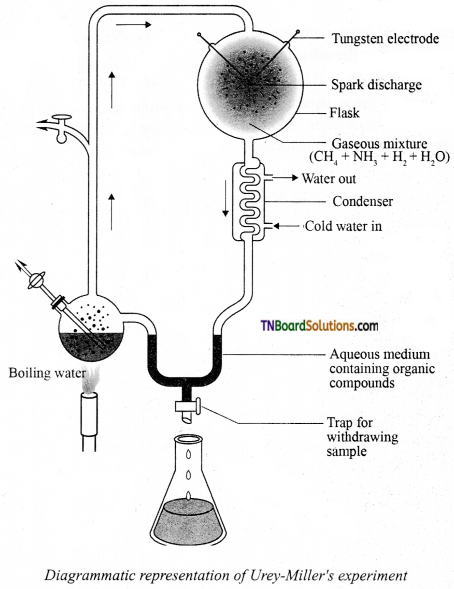
Question 3.
Explain ‘Biogenetic law’ proposed by Ernst von Haeckel.
Answer:
Biogenetic law states that the higher animals pass through stages of lower animals during their embryonic development. This law is otherwise known as the theory of recapitulation, which states that ontogeny repeats or recapitulates phylogeny. Ontogeny is the life history of an organism and phylogeny is the evolutionary history of a race. According to this law, the embryonic stages of a higher animal resemble its ancestors. For example, pharyngeal gill slits, yolk sac, the appearance of the tail in the human embryo.
This indicates that the human embryo repeats the embryonic history and not the adult history of the organisms. Therefore, the biogenetic law is not universal. It is now thought that animals do not recapitulate the adult stage of any ancestors.
![]()
Question 4.
Explain the basic factors involved in the process of organic evolution.
Answer:
- Gene mutation: This refers to the changes in the structure of the gene. The phenotypes of an organism will be altered due to gene mutation and produce variations in the offspring.
- Chromosomal mutation: This refers to the changes in the structure of the chromosomes due to deletion, addition, duplication, inversion, or translocation.
These changes in the structure of chromosomes bring about phenotypic variations in an organism, which in turn brings variation in their offsprings. - Genetic recombination: This is a phenomenon due to the crossing over of genes during meiosis. This brings about the heritable genetic variation of an organism and its offspring.
- Natural selection: This does not favor any genetic variation. When such variations occur, it favours some genetic changes, rejecting others (driving force of evolution).
- Reproductive isolation: This helps in preventing inbreeding between related species.
Choose the correct answers.
1. Match the following:


(a) (p)-(iv); (q)-(iii); (r)-(ii); (s)-(i)
(b) (p)-(iv); (q)-(iii); (r)-(i); (s)-(ii)
(c) (p)-(ii); (q)-(i); (r)-(iv); (s)-(iii)
(d) (p)-(iii); (q)-(iv); (r)-(i); (s)-(ii)
Answer:
(b) (p)-(iv); (q)-(iii); (r)-(i); (s)-(ii)
2. Match the following:

(a) (p)-(iv); (q)-(iii); (r)-(ii); (s)-(i)
(b) (p)-(iv); (q)-(iii); (r)-(i); (s)-(ii)
(c) (p)-(iii); (q)-(iv); (r)-(ii); (s)-(i)
(d) (p)-(ii); (q)-(i); (r)-(iv); (s)-(iii)
Answer:
(c) (p)-(iii); (q)-(iv); (r)-(ii); (s)-(i)
![]()
3. Match the following:
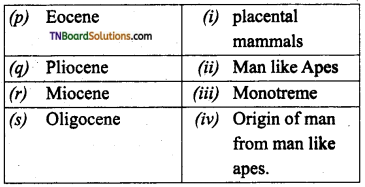
(a) (p)-(iv); (q)-(iii); (r)-(ii); (s)-(i)
(b) (p)-(iii); (q)-(iv); (r)-(i); (s)-(ii)
(c) (p)-(ii); (q)-(i); (r)-(iv); (s)-(iii)
(d) (p)-(iii); (q)-(iv); (r)-(ii); (s)-(i)
Answer:
(d) (p)-(iii); (q)-(iv); (r)-(ii); (s)-(i)
4. Match the following:
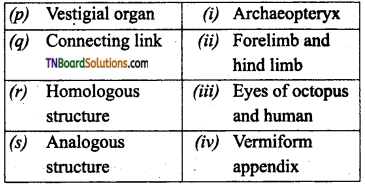
(a) (p)-(iv); (q)-(i); (r)-(ii); (s)-(iii)
(b) (p)-(iv); (q)-(iii); (r)-(ii); (s)-(i)
(c) (p)-(iv); (q)-(iii); (r)-(i); (s)-(ii)
(d) (p)-(ii); (q)-(i); (r)-(iv); (s)-(iii)
Answer:
(a) (p)-(iv); (q)-(i); (r)-(ii); (s)-(iii)
5. Match the following:
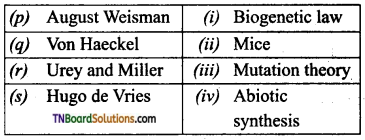
(a) (p)-(iv); (q)-(iii); (r)-(ii); (s)-(i)
(b) (p)-(iv); (q)-(iii); (r)-(i); (s)-(ii)
(c) (p)-(ii); (q)-(i); (r)-(iv); (s)-(iii)
(d) (p)-(iii); (q)-(iv); (r)-(i); (s)-(ii)
Answer:
(c) (p)-(ii); (q)-(i); (r)-(iv); (s)-(iii)
![]()
6. Neo Darwinism is proposed by:
(a) De Vries
(b) Weisman
(c) James Crick
(d) Osborn
Answer:
(b) Weisman
7. Hardy-Weinberg law refers to:
(a) Gene frequency in an individual
(b) Gene flow in an organism
(c) Gene frequency within a population
(d) DNA sequence of an organism.
Answer:
(c) Gene frequency within a population
8. The typical example for adaptive radiation is:
(a) Industrial melanism
(b) Darwin’s finches
(c) Albinism
(d) Pleotropism
Answer:
(b) Darwin’s finches
9. What is the brain capacity of Homo ability
(a) 450-500 cc
(b) 600-650 cc
(c) 350-450 cc
(d) 650-800 cc
Answer:
(d) 650-800 cc
10. Biogenetic law was first proposed by:
(a) Ernst Von Hackel
(b) Heinrich
(c) Wallace
(d) Watson
Answer:
(a) Ernst Von Hackel
11. Choose the odd man out:
(a) Darwin
(b) Lamarck
(c) Weisman
(d) Watson and Crick
Answer:
(d) Watson and Crick
12. Find out the odd one out:
(a) Natural Selection
(b) Creation
(c) Darwinism
(d) Lamarckism
Answer:
(b) Creation
![]()
13. Identify the odd one out:
(a) Silurian
(b) Ordovician
(c) Jurassic
(d) Devonian
Answer:
(c) Jurassic
14. Indicate the odd one out:
(a) Paleozoic era
(b) Cenozoic era
(c) Mesozoic era
(d) Golden era
Answer:
(d) Golden era
15. Choose the odd one out:
(a) Genetic drift
(b) Genome
(c) Mutation
(d) Gene flow
Answer:
(b) Genome
16. Which of the following pair is correct?
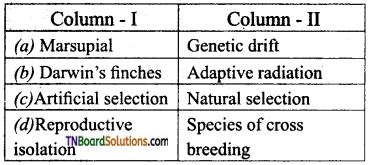
Answer:
(b)
17. Choose the incorrect pair:
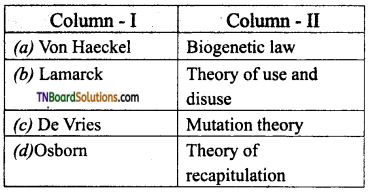
Answer:
(d)
![]()
18. Indicate the correct pair:
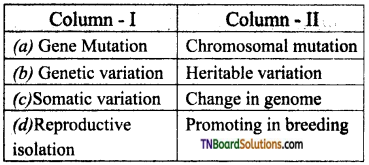
Answer:
(b)
19. Choose the incorrect pair:
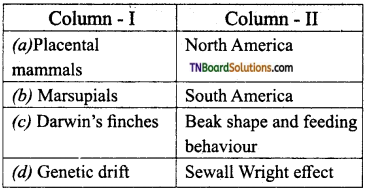
Answer:
(b)
20. Which of following is the correct pair?
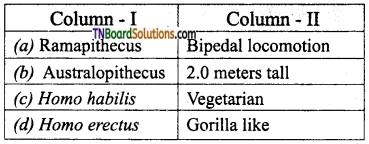
Answer:
(c)
21. Assertion: Living organisms originated from non-living substances through a series of chemical and molecular evolution over millions of years, as stated by Thomas Huxley.
Reason: Oparin suggested that the organic compounds could have undergone a series ‘ of reactions leading to more complex molecules.
(a) Assertion and reason are correct, reason is the correct explanation of assertion.
(b) Assertion and reason are correct, reason is not the correct explanation of assertion.
(c) Assertion is not correct, reason is correct.
(d) Assertion and reason are not correct.
Answer:
(b) Assertion and reason are correct, reason is not the correct explanation of assertion.
![]()
22. Assertion: Monera are considered as ancestral to bacteria and blue-green algae
Reason: Monera is the primitive cells that contained clumps of nucleoproteins embedded in the cell membrane.
(a) Assertion and reason are correct, reason is the correct explanation of assertion.
(b) Assertion and reason are correct, reason is not the correct explanation of assertion.
(c) Assertion is not correct, reason is correct.
(d) Assertion and reason are not correct.
Answer:
(a) Assertion and reason are correct, reason is the correct explanation of assertion.
23. Assertion: Fossilization is a process by which plant and animal remains are preserved in sedimentary rocks.
Reason: When marine animals die, their hard parts like bones, shells, etc., are covered with sediments and protected from further deterioration for years.
(a) Assertion and reason are correct, reason is the correct explanation of assertion.
(b) Assertion and reason are correct, reason is not the correct explanation of assertion.
(c) Assertion is not correct, reason is correct.
(d) Assertion and reason are not correct.
Answer:
(a) Assertion and reason are correct, reason is the correct explanation of assertion.
24. Assertion: The basic plan of basic structure such as forelimbs and hind limbs in vertebrates are homologous.
Reason: Forelimbs of vertebrates exhibit similarity with each other and are made up of similar bones such as the humerus, radius, ulna, carpels metacarpals, and phalanges.
(a) Assertion and reason are correct, reason is the correct explanation of assertion.
(b) Assertion and reason are correct, reason is not the correct explanation of assertion.
(c) Assertion is not correct, reason is correct.
(d) Assertion and reason are not correct.
Answer:
(a) Assertion and reason are correct, reason is the correct explanation of assertion.
![]()
25. Assertion: Mutations or discontinuous variations are not transmitted to other generations.
Reason: Because they are somatic variations.
(a) Assertion and reason are correct, reason is the correct explanation of assertion.
(b) Assertion and reason are correct, reason is not the correct explanation of assertion.
(c) Assertion is not correct, reason is correct.
(d) Assertion and reason are not correct.
Answer:
(d) Assertion and reason are not correct.
26. Which of the following statement is correct?
(a) In a naturally breeding population, mutations occur once in life.
(b) In a naturally breeding population mutations occur from time to time.
(c) In a naturally breeding population mutations may not occur.
(d) None of the above.
Answer:
(b) In a naturally breeding population mutations occur from time to time.
27. Choose the incorrect statement:
(a) Darwin failed to explain the mechanism variation.
(b) Darwin wrote the book “The origin of species by Natural Selection”.
(c) He focused on variations that are mostly heritable.
(d) He did not distinguish between somatic and germinal variation.
Answer:
(c) He focused on variations that are mostly heritable.
28. Indicate the correct statement:
(a) Cenozoic is the age of reptiles.
(b) Cenozoic era is subdivided into two periods namely tertiary and quaternary.
(c) Cenozoic era is the age of dinosaurs.
(d) None of the above.
Answer:
(b) Cenozoic era is subdivided into two periods namely tertiary and quaternary.
29. Which of the following statement is correct?
(a) In stabilizing selection, the organisms with both extreme phenotypes are eliminated, while organisms with average phenotypes survive.
(b) The organisms with both extreme phenotypes survive, whereas organisms with average phenotypes are eliminated.
(c) This is a rare form of selection leading to population equilibrium.
(d) None of the above.
Answer:
(a) In stabilizing selection, the organisms with both extreme phenotypes are eliminated, while organisms with average phenotypes survive.
![]()
30. Choose the incorrect statement:
(a) Ramapithecus were derived from ape-like Dryopithecus.
(b) Australopithecus lived in East African grasslands.
(c) Homo erectus lived in Gangetic valley.
(d) Neanderthal human was found in Germany.
Answer:
(c) Homo erectus lived in Gangetic valley.
